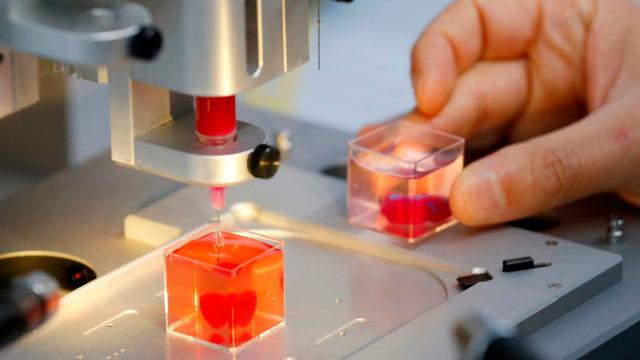You remember the Segway, the two-wheeled device that required a gymnastics-level of balance to ride standing upright? Its inventor is currently working on an incredibly ambitious project to create a massive lab for growing human organs — once the FDA approves lab-grown organs for human transplant, of course. There’s still a long way to go research-wise, but Segway inventor Dean Kamen wants to be prepared for when that time inevitably comes, he says. So he’s getting ahead of the game by inventing and building prototype machines that he believes can do the job. OneZero details it all in one of its recent publications.
Kamen’s decadeslong journey of inventions started with a wheelchair that allowed users to walk up and down stairs and raise to eye level. He moved on to a standing version — the Segway — that became popular with mall cops, college campus public safety officers, and tour groups. But as OneZero writes, the Segway never really did become the next big thing that some theorised it would. So in 2009, Kamen sold his company to James Heselden. (That was the guy who, you probably remember, accidentally rode his own Segway off a cliff and died.) Today, Segway is owned by a China-based company, Ninebot, that has since expanded the line to include scooters and go-karts.
Though he’s moved on from Segway, Kamen hasn’t stopped inventing. Like his initial design that became the Segway, OneZero reports, many of his inventions have a medical focus and purpose. Kamen has invented medical pumps and stents, prosthetic robotic arms for injured soldiers, and water purifying machines for villages in developing countries. His company also started manufacturing sterile IV bags and developing better mask materials when the global covid-19 crisis struck. His company website lists more inventions than that, and says that in total, Kamen holds more than 440 U.S. and foreign patents.
But Kamen now wants to build factories for lab-grown human organs, which would help the 110,617 people in the U.S. currently waiting to receive an organ transplant. With an $US80 ($116) million grant from Department of Defence he and his company received in 2016, Kamen started the Advanced Regenerative Manufacturing Institute, a nonprofit that connects 170 medical companies, institutions, and organisation across the U.S. to share research and resources. BioFabUSA is the division of ARMI responsible for researching and building the equipment needed to mass-produce future lab-grown human organs. Today, the ARMI has around $US300 ($435) million in funding to put toward that goal, among others, OneZero reports, and is already underway on a prototype machine.
According to OneZero, Kamen is not only using part of that funding to make the tools and machinery to mass-produce organs for people in need of them, but he also wants to “pump out hearts and kidneys much the same way factories produce smartphones: in high-tech assembly lines.” If Silicon Valley can do it with semiconductors, he should be able to do it with human tissue, Kamen told the publication.
Science is still a ways off from growing organs in a lab. However, Tel Aviv University researchers announced in April 2019 they were the first to bioprint a human heart. Bioprinting is a process like 3D printing, but instead of using plastic to make a Mandalorian helmet, scientists use biological materials to “print” an organ.
Kamen just wants to be ready to make human organs when the time comes, even if we’re still several years away from that becoming a reality. His machines could eventually be used to make other body parts, too, like tendons and ligaments, which I find particularly interesting; I had knee surgery to replace my torn ACL over 10 years ago, but the cadaver tendon used to replace it disintegrated inside my joint, so I’ve been living without that connective tissue for a decade. All that’s left are two screws that once held it in place, one burrowed into my tibia and the other in my femur. If Kamen’s vision comes true, then perhaps in the future I’ll have my own printed tissue put in its place.
